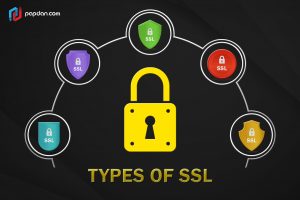Since, Google cybercrime gets bigger and bigger nowadays, the way Google assesses a website is change. In fact, Google is among the most proactive, they give better rewards to sites whose adding SSL certificates (or HTTPS). This makes many SEO engineers put a good attention on SSL certificate for their better SEO service. But, you need to be more careful in choosing the right SSL certificate, as there are many types of SSL certificate. Each SSL types use the same standard encryption methods but each option has their own requirements and distinct characteristics.
Option #1. Single Domain
Single domain (or single-name) SSL certificates protect a single domain. This SSL type really works well for simple and straightforward content-based sites. These sites include B2B sites, e-commerce ones where all transactions occur on a single domain. Someone has to get an authenticated domain ownership when she/he wants to get a “Domain-validated”.
Option #2. Multi-Domain (SAN)
Multi-domain SSL certificates are also what they sound like. Multi-domain SSL certificates are also referred to as “SAN” (for Subject Alternative Names). With SAN and one multi-domain SSL certificate, it will cover a suite of sites. So, they provide flexibility for covering sites that might go away or not yet exist.
Option #3 Wildcard
If you want to cover all subdomains on a single root domain or host name, wildcard SSL certificates will be suitable for you. It uses an unsecure, content-driven ‘marketing’ site on the primary domain. Fortunately, this SSL’s type can run all purchase-related through a secure subdomain. With this single wildcard SSL certificate, you can simplify the mess, and it also protects the main site.
Option #4 Organization
Organization SSL certificates works to authenticate a company’s identity and information, such as the company’s primary address, and etc. You may think that this is similar to single domain. But in organization SSL certificates, you will get more content-based sites. By this, you don’t need to secure an e-commerce or payments component.
Moreover, you also will be asked to confirm and authenticate the other organization-related details as well.
Option #5 Extended
The last option, called as extended is better known as the most secure option. They do the extra organization validation bit by verifying the domain. It also double checks the legal corporation. It will also show a green address bar on most modern browsers for your troubles. In Chrome, you’ll also get the company name like this Twitter example below:
Credibility is what you’re paying for here. But, the secure connection uses on your site are that different than any other reputable SSL connection.
Hence, by selecting the right SSL certificate types, you’ll get a single certificate to purchase and set up to protect multiple different sites.





